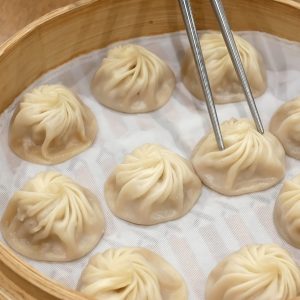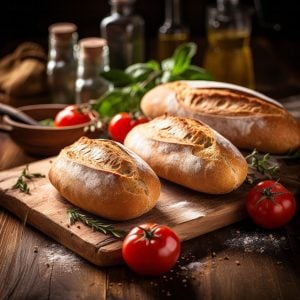Exploring Sherry Vinegar: Flavor Profile, Substitutes, and Storage Tips
Sherry vinegar doesn’t always get the spotlight it deserves, but it absolutely should have a permanent spot in your pantry. Made from sherry wine and aged in oak barrels, this vinegar brings a mellow acidity and layered flavor that can elevate just about any dish.
It’s not as sharp as white vinegar, nor as sweet as balsamic—think of it as the happy middle ground with depth and complexity. A splash can brighten up salad dressings, marinades, or pan sauces.
A drizzle can wake up roasted vegetables or balance the richness of a stew. It’s one of those secret weapons chefs swear by to add that “something extra” to a dish without overpowering it.
The beauty of sherry vinegar is in its versatility—you’ll find yourself reaching for it more than you’d expect. And because a little goes a long way, one bottle can last you months.
So whether you’re building your first serious pantry or just looking to expand your flavor toolkit, sherry vinegar is one simple addition that will quickly earn its keep. In this post, I’ll share exactly why I think it’s worth having on hand—and a few easy ways to start using it today.
What Is Sherry Vinegar?
Sherry vinegar, a gem of Spanish cuisine, hails from the Sherry Triangle in Andalusia, where it is crafted with the same meticulous care as the region’s famed sherry wines. This distinctive vinegar is made from Palomino, Pedro Ximénez, or Moscatel grapes, which are fermented and aged using the traditional solera system.
This process involves blending young vinegars with older ones, creating a complex, layered flavor profile that sets sherry vinegar apart from other varieties. The aging process, which can span six months to over ten years, imparts a rich, nuanced character to sherry vinegar.
The resulting product boasts a deep amber hue and a robust and balanced taste, with notes of dried fruit, nuts, and a subtle hint of sweetness. This unique flavor makes sherry vinegar a versatile kitchen ingredient, enhancing everything from vinaigrettes and marinades to soups and stews.
Highly regarded by chefs and food enthusiasts, sherry vinegar is celebrated for elevating dishes with its depth and complexity. Its robust acidity can brighten up fresh salads, deglaze pans to create flavorful sauces, and add a sophisticated touch to savory and sweet recipes. As a staple in Spanish cuisine and a prized addition to gourmet kitchens worldwide, sherry vinegar continues to captivate palates with its rich heritage and exceptional taste.
Age Category | Typical Aging Time | Best Uses |
| Young (Silver or Oro) | 6 months to 2 years | Bright and sharp—great for everyday salad dressings, marinades, and light sauces. |
| Medium (Reserva) | 3 to 5 years | More balanced with nuttier notes—ideal for soups, stews, and pan sauces. |
| Aged (Gran Reserva) | 10 years or more | Rich, complex, and smooth—perfect for finishing dishes, drizzling over roasted vegetables, and gourmet sauces. |
What Does It Taste Like?
Sherry vinegar boasts a complex and nuanced flavor profile that differentiates it from other vinegars. Its taste is a harmonious blend of sharp acidity and deep, rich undertones, offering a multi-layered experience for the palate. Here are some key characteristics that define its taste:
Flavor Characteristic | Description |
| Acidity | Pronounced acidity that provides a bright, tangy kick, essential for balancing and enhancing flavors in various dishes. |
| Nutty and Woody Notes | Flavors from the solera aging process; carries nutty and woody notes reminiscent of the oak barrels in which it matures. |
| Dried Fruit and Raisin | Subtle hints of dried fruits, particularly raisins and dates, adding slight sweetness and depth. |
| Caramel and Toffee | Undertones of caramel or toffee, especially in longer-aged varieties, contributing to a richer, more rounded flavor. |
| Umami | Aged sherry vinegar can exhibit umami characteristics, enhancing savory dishes with a satisfying, mouth-filling quality. |
| Balance and Complexity | Well-balanced, combining acidity, sweetness, and depth, making it a versatile ingredient to elevate a wide range of dishes. |
These intricate flavors make sherry vinegar a prized addition to vinaigrettes, marinades, sauces, and even some desserts. It offers a sophisticated touch to simple and complex dishes.
How Can It Be Used?
Sherry vinegar is a versatile and sophisticated ingredient that can enhance various dishes. Its complex and balanced flavor profile makes it a favorite among chefs and home cooks. Here are some common uses for sherry vinegar:
Use | Description |
| Salad Dressings | Adds rich, tangy depth to vinaigrettes. Combine with olive oil, mustard, honey, and herbs for a flavorful dressing. |
| Marinades | Its acidity helps tenderize meats and infuse them with flavor. Great in marinades for chicken, pork, or beef. |
| Deglazing | Deglaze pans after sautéing meat or vegetables, lifting caramelized bits to create a flavorful sauce base. |
| Soups and Stews | Brightens and balances the flavors of hearty soups and stews—perfect for lentil or bean-based dishes. |
| Sauces | Adds complexity and acidity to sauces, including reductions and rich, creamy or meat-based sauces. |
| Pickling | Imparts a distinctive flavor to pickled vegetables; adds elegance to pickling brines. |
| Roasted Vegetables | Enhances natural sweetness and adds tang to roasted veggies like Brussels sprouts, carrots, or beets. |
| Seafood | Pairs beautifully with seafood—use in marinades or drizzled over grilled or sautéed fish. |
| Desserts | Adds gourmet depth to desserts. Try a few drops in fruit compotes, caramel sauces, or chocolate dishes. |
| Finishing Touch | Elevates dishes like gazpacho, risotto, or scrambled eggs with just a small drizzle. |
Thanks to its rich, multifaceted taste, incorporating sherry vinegar into your cooking can transform ordinary dishes into extraordinary culinary experiences.
Substitutes
When you need a substitute for sherry vinegar, it’s essential to consider both flavor and acidity to find the best match. Here are some excellent alternatives:
Substitute | Description | Suggested Usage Ratio |
| White Wine Vinegar | Close in acidity and lighter in flavor. May lack some depth but works well in most recipes. | 1:1 |
| Apple Cider Vinegar | Fruity undertones; great for salads, marinades, and sauces. Slightly more robust—use a bit less. | 3:4 (use 75%) |
| Red Wine Vinegar | Robust flavor that mimics sherry vinegar’s complexity. Suitable for dressings, marinades, and sauces. | 1:1 |
| Champagne Vinegar | Delicate and slightly sweet; ideal for lighter dishes like dressings and seafood. | 1:1 |
| Balsamic Vinegar | Suitable for richer, sweeter recipes. Adjust amount due to its pronounced sweetness. | 1:2 (start with half the amount) |
| Rice Vinegar | Mild and slightly sweet; works in Asian-inspired dishes or where subtle acidity is preferred. | 1:1 |
| Lemon or Lime Juice | Provides acidity in a pinch. Flavor differs—best in dressings or marinades with complementary citrus notes. | 1:1 (taste and adjust) |
| White Balsamic Vinegar | Milder, sweeter flavor similar to sherry vinegar. Great in salads and light sauces. | 1:1 |
Each substitute can work well depending on the dish’s desired flavor profile. Adjusting quantities and tasting as you go can help you achieve the best results.
How to Store Sherry Vinegar?
Proper storage is essential to preserve the quality and flavor of sherry vinegar. Here are the best practices for storing sherry vinegar:
| Do | Don’t |
|---|---|
| Store in a cool, dark place | Expose to direct sunlight |
| Keep in original bottle or airtight container | Leave bottle loosely capped or open |
| Store away from heat sources | Keep near the stove or oven |
| Maintain consistent temperature | Store where temperatures fluctuate |
| Keep bottle upright and sealed | Store bottle lying down or unsealed |
| Trust its natural acidity—no need to refrigerate | Refrigerate unnecessarily |
By following these storage guidelines, you can ensure that your sherry vinegar retains its rich, complex flavor and remains a versatile kitchen ingredient for a long time.
A Little Sherry Vinegar History
The history of sherry vinegar is deeply intertwined with Spain’s rich cultural and culinary heritage, particularly the Andalusian region known as the Sherry Triangle, which encompasses the cities of Jerez de la Frontera, Sanlúcar de Barrameda, and El Puerto de Santa María. This area, famous for its sherry wine production, has cultivated the Palomino, Pedro Ximénez, and Moscatel grape varieties for centuries.
The origins of sherry vinegar date back to ancient times when winemakers discovered that some batches would inevitably turn to vinegar due to oxidation. Rather than discard these batches, they recognized the culinary potential of this transformation, leading to the deliberate production and refinement of sherry vinegar. By the 16th century, sherry vinegar was already a valued commodity, appreciated for its distinct flavor and versatility.
The production of sherry vinegar follows the same solera aging process used for sherry wine. This method involves stacking barrels in tiers, with the oldest vinegar at the bottom and the youngest at the top. Over time, vinegar is drawn from the bottom barrels for use, and they are replenished with vinegar from the higher barrels, ensuring a continuous blend of ages and preserving the complex, layered flavors characteristic of sherry vinegar.
The designation “Vinagre de Jerez” became protected under Spanish law in 1994, establishing standards for its production and ensuring its quality and authenticity. Today, sherry vinegar enjoys Protected Designation of Origin (PDO) status within the European Union, further cementing its reputation as a premium product. Renowned for its rich, complex flavor, sherry vinegar remains a staple in Spanish cuisine and a favorite among chefs worldwide, embodying centuries of tradition and expertise.
Where to Buy Sherry Vinegar
I started this post by saying it is hard to find in most supermarkets but it is readily available online. You can find some different selections at Amazon.com. Here are a few to check out.
 Learn More Learn More |  Learn More Learn More |  Learn More |













3 Responses
I do not know what a web site is…
My interest is how to make sherry vinegar.
I have red wine mother and make my own salad vinegar.
But I have some old bottles which have a weakened
flavor and do not want to just pour them down the sink.
Any suggestions>
Thank you very much.
Vernon Smith.
Hi Vernon, after doing a little research, I’m not sure you can make it at home. It is “the unfermented freshly-pressed juice (‘must’) of sherry grapes and then aged in oak barrels for six months and up to ten years.” Not from sherry wine.
Was watching Spencer Watt (fish the dish). On making slaw to serve with walleye, called for “vinegar spa” replayed several times but still sounded like “vinegar spa”…at any rate substituted with white wine vinegar with a splash of dry sherry. Wow!
sliced cabbage, grated carrot, celery seed, (above concoction), olive oil, and salt better if left in refrig overnight.